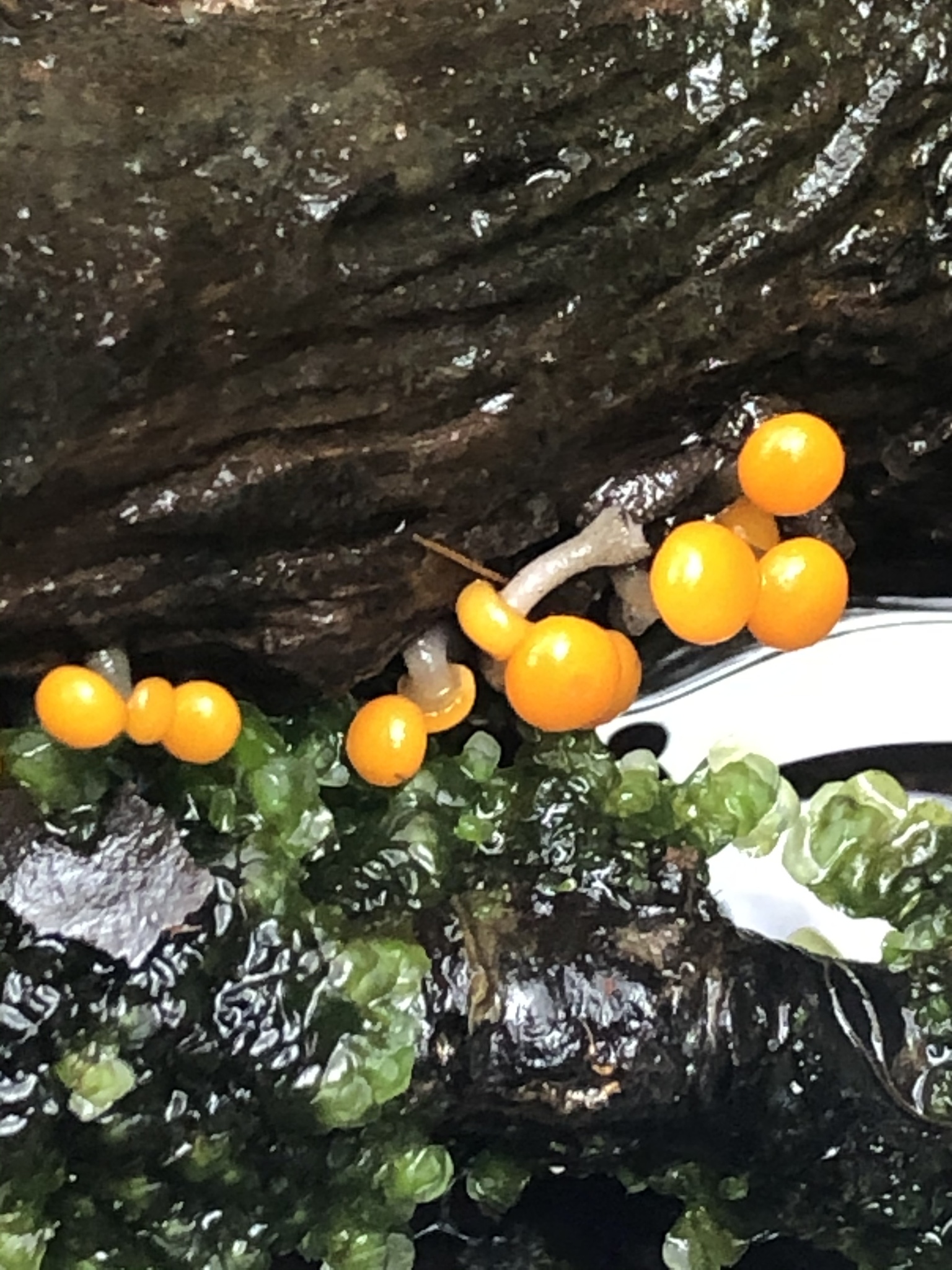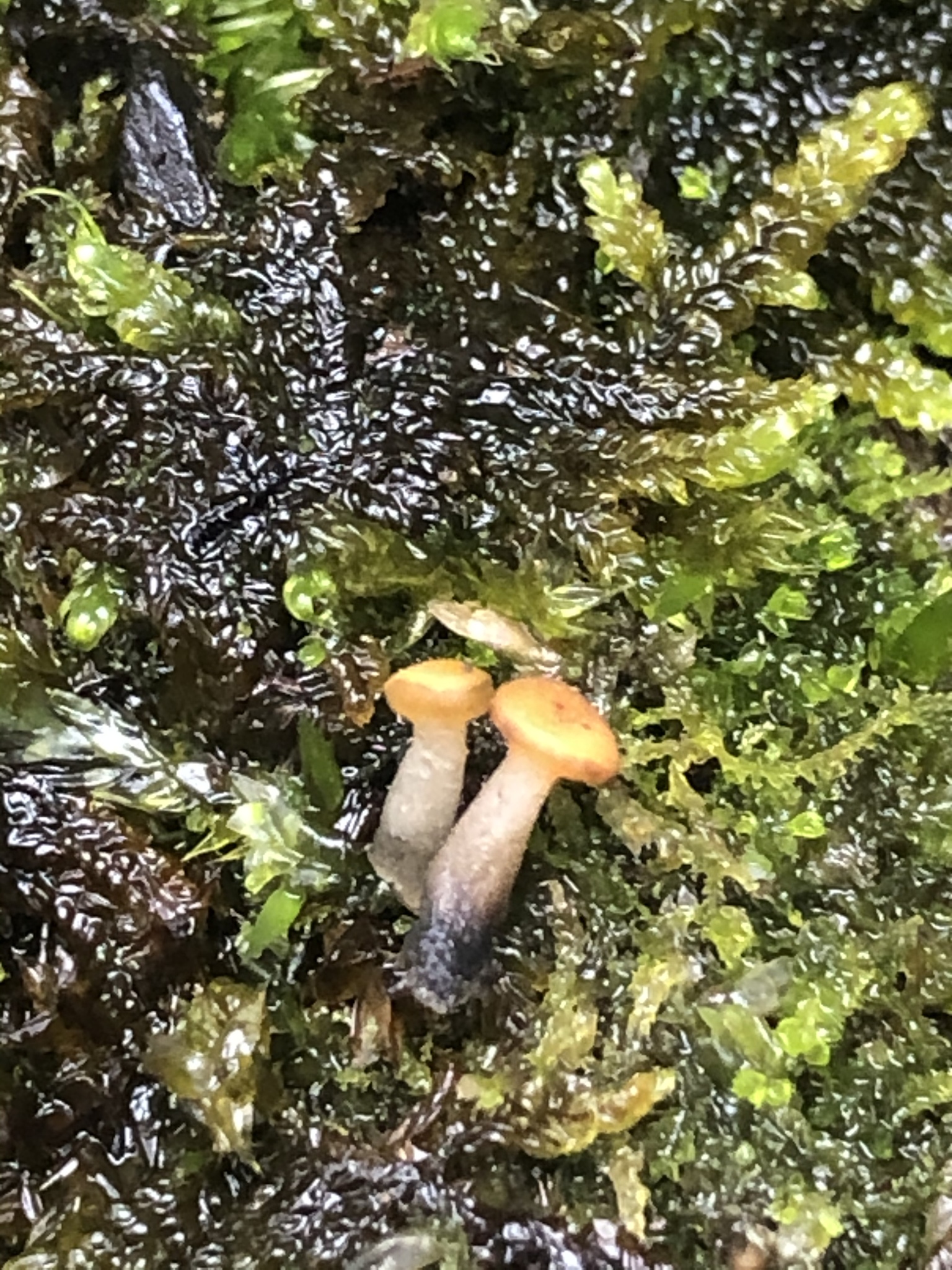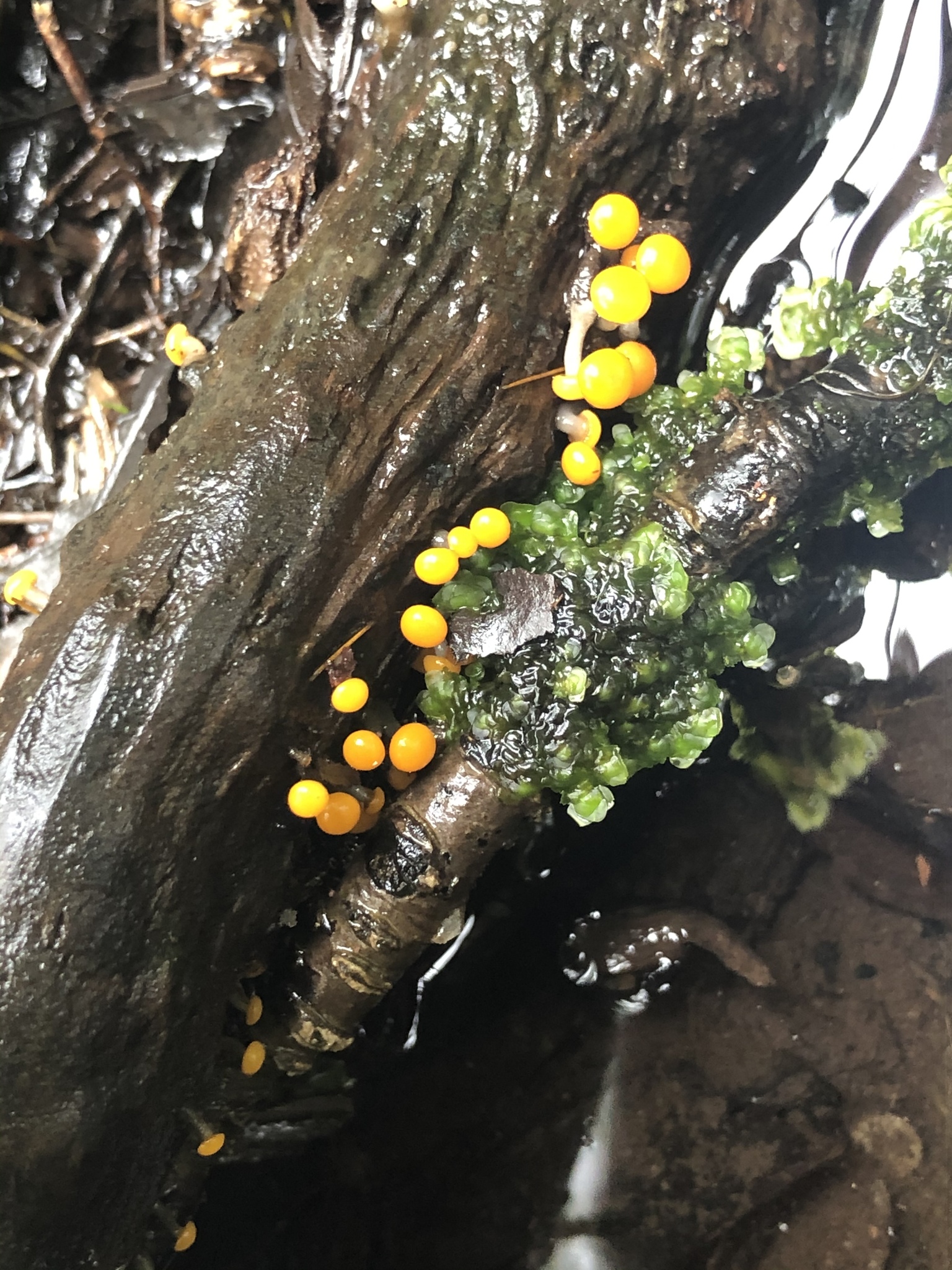Map Snapshot




4 Records
Seasonality Snapshot
Source: Wikipedia
| Vibrissea truncorum | |
|---|---|

| |
| Scientific classification | |
| Domain: | Eukaryota |
| Kingdom: | Fungi |
| Division: | Ascomycota |
| Class: | Leotiomycetes |
| Order: | Helotiales |
| Family: | Vibrisseaceae |
| Genus: | Vibrissea |
| Species: | V. truncorum
|
| Binomial name | |
| Vibrissea truncorum Albertini & Schweinitz (1822)
| |
Vibrissea truncorum, the water club mushroom or aquatic earth-tongue, is a species of fungus in the family Vibrisseaceae.[1] It is found throughout the Northern Hemisphere.
Taxonomy
[edit]This section is empty. You can help by adding to it. (February 2023) |
Description
[edit]Water club mushroom is a fungus that grows up to about 2 centimetres (3⁄4 inch) tall, with a cap 0.3–0.5 cm (1⁄8–1⁄4 in) wide. It is characterized by its yellow, orange, or reddish fruiting body, and white to bluish-gray stem, darkening to brown at the base.[2]
Similar species
[edit]The heads of Leotia and Cudonia species are less yellow, while Vibrissea species can lack stems.[3]
Distribution and habitat
[edit]Vibrissea truncorum is a cosmopolitan mushroom, found throughout the Northern Hemisphere, including North America (in the Pacific Northwest and the Atlantic Northeast),[3] Europe, Japan, and rarely in eastern Russia and Chile.[4] It is most heavily concentrated in Norway, Sweden, Finland, and Western Russia, though it appears also in the United Kingdom and Southwestern Europe.
Water club mushroom often grows on partially or completely submerged wood in streams at higher elevations.[2]
Ecology
[edit]This section is empty. You can help by adding to it. (February 2023) |
References
[edit]- ^ "Water Club Mushroom (Vibrissea truncorum)". iNaturalist. Retrieved 9 February 2023.
- ^ a b Klinkenberg, Brian, ed. (2020). "E-Flora BC: Electronic Atlas of the Plants of British Columbia". Archived from the original on 10 February 2023. Retrieved 9 February 2023.
- ^ a b Audubon (2023). Mushrooms of North America. Knopf. p. 62. ISBN 978-0-593-31998-7.
- ^ "Vibrissea truncorum (Alb. & Schwein.) Fr". Retrieved 9 February 2023.


